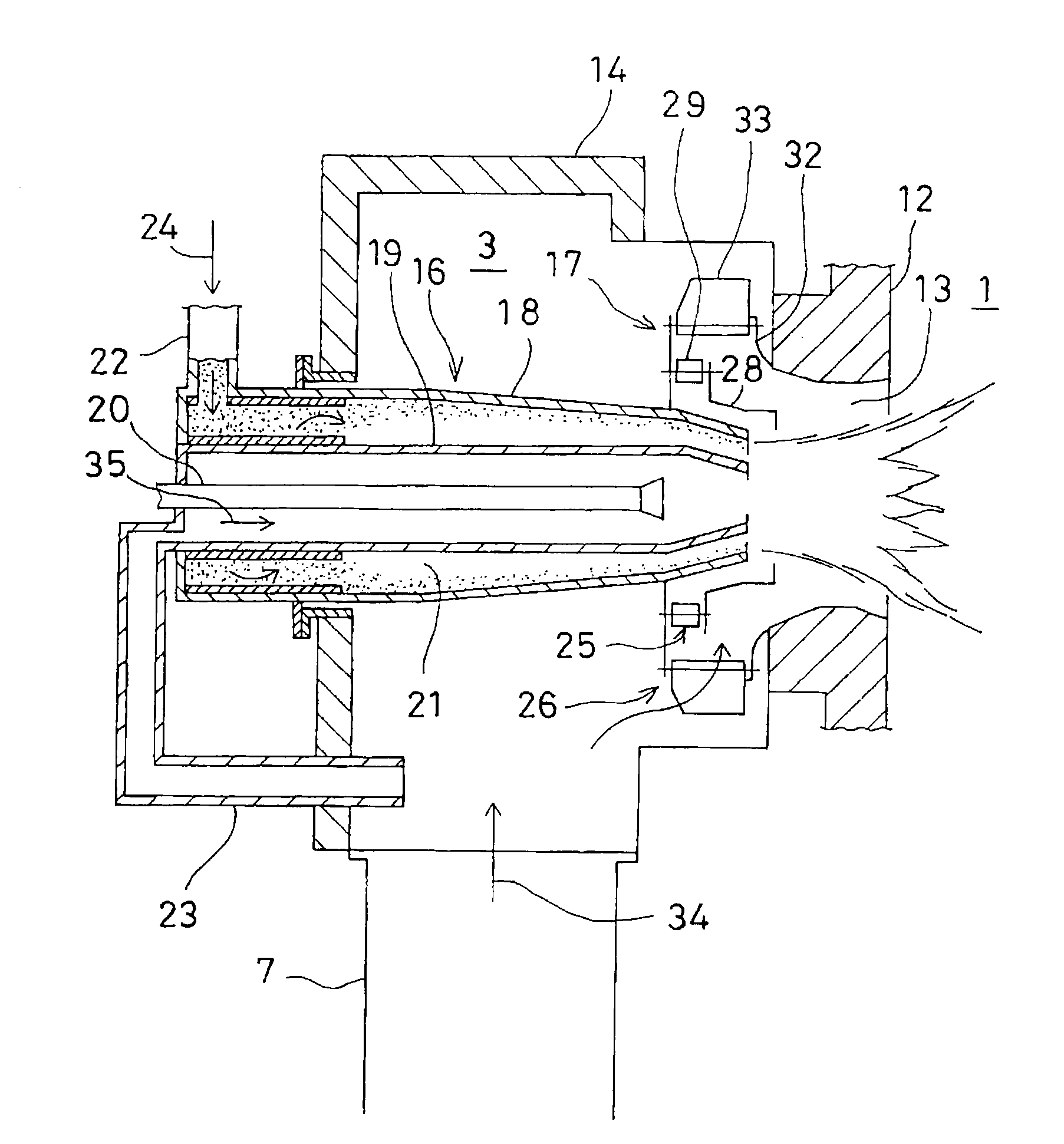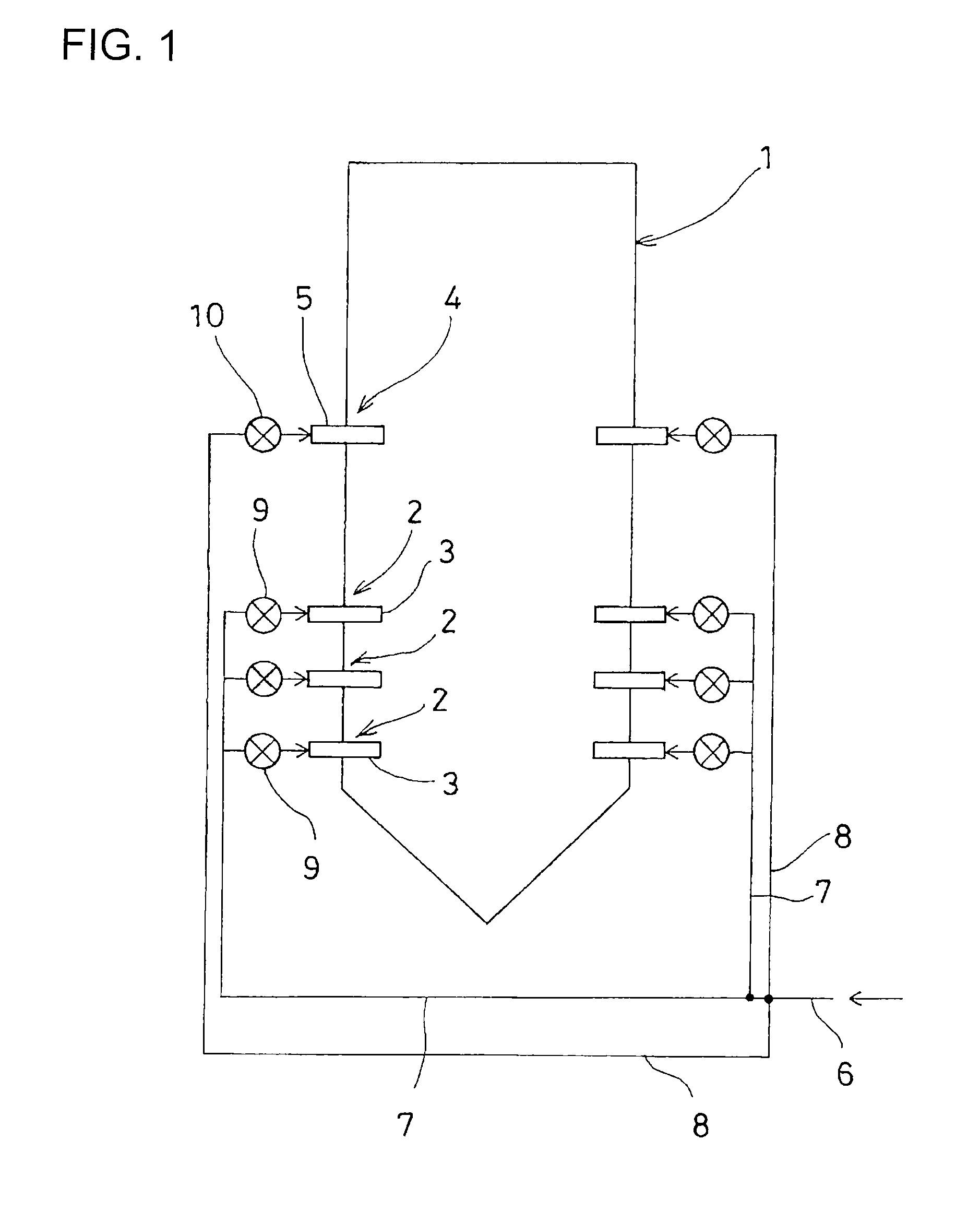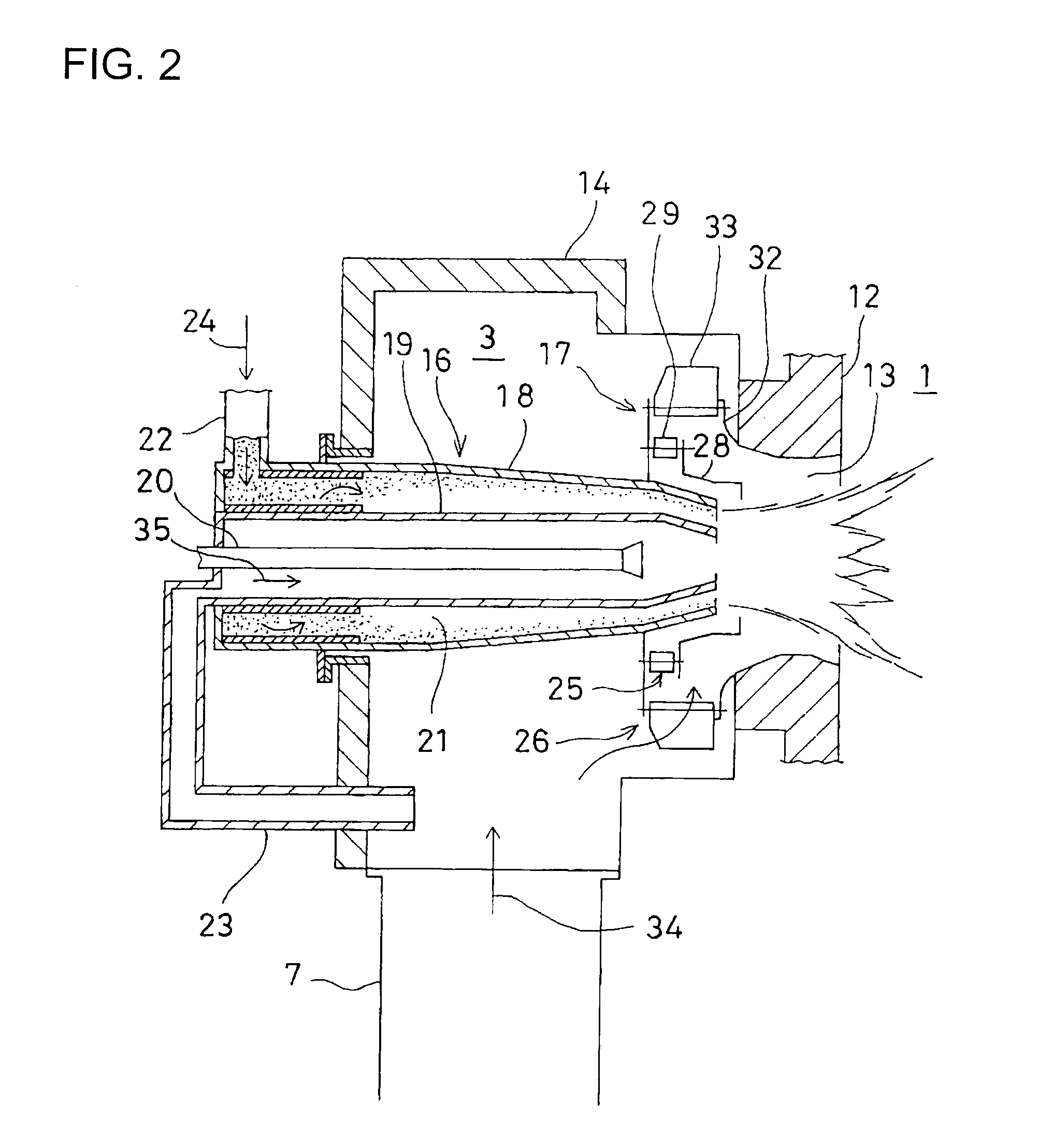burner
a burner and burner technology, applied in the field of burners, can solve the problems of difficult high-speed combustion control, etc., and achieve the effects of reducing manufacturing costs, excellent advantageous effects, and no backlash
- Summary
- Abstract
- Description
- Claims
- Application Information
AI Technical Summary
Benefits of technology
Problems solved by technology
Method used
Image
Examples
first embodiment
[0093]FIG. 3 shows the invention applied to a pulverized coal burner.
[0094]In the figure, parts equivalent to those shown in FIG. 2 are denoted by same reference numerals and will not be detailed.
[0095]A pulverized coal burner 15 is housed in a wind box 14 and an air adjuster 36 is arranged to house a leading end of a nozzle body 16. Through the wind box 14, secondary air 34 is taken in from surroundings of and swirled by the air adjuster 36 and flows out toward a throat 13.
[0096]Next, the air adjuster 36 will be described with reference to FIG. 4.
[0097]An end plate 37 is attached to an outer cylinder nozzle 18 at a position away from an furnace wall outer surface 39 (or a surface of the wind box 14 adjacent to the furnace) by a required distance. The end plate 37 is perpendicular to an axis of the nozzle body 16 and is disk-shaped concentrically of the nozzle body 16.
[0098]Arranged between the furnace wall outer surface 39 and the end plate 37 is a ring-shaped partition plate 38 wi...
second embodiment
[0113]FIG. 5 shows a In FIG. 5, parts equivalent to those shown in FIG. 3 are denoted by same reference numerals and will not be described.
[0114]In the second embodiment, a porous member 48 such as a punching metal or mesh is arranged on a circumference at which the away-furnace air induction chamber 47 is opened.
[0115]With a state where no porous member 48 is arranged, the secondary air 34 flowing into the near-furnace air induction chamber 46 has a pressure loss due to its passing through the air vanes 41 whereas the secondary air 34 flowing into the away-furnace air induction chamber 47 has no pressure loss since no resistance exists. Therefore, a supplied airflow rate varies between the blocking of the near-furnace air induction chamber 46 and the blocking of the away-furnace air induction chamber 47. Thus, the flow rate of blown air must be adjusted on the supplying side of the primary air 24 in accordance with the air adjustment by the slide damper 43; alternatively, airflow ...
third embodiment
[0117]FIG. 6 shows a In FIG. 6, parts equivalent to those shown in FIG. 3 are denoted by same reference numerals and will not be described.
[0118]In the third embodiment, the slide damper 43 has a divided configuration constituted by a plurality of cylindrical bodies to achieve diversification of the air adjustment by the air adjuster 36. Shown is a case of two-part configuration.
[0119]The slide damper 43 comprises first and second slide dampers 43a and 43b which are arranged like concentric circles and freely slidable without interfering with each other. The first and second slide dampers 43a and 43b are connected to and independently drivable by first and second actuators 44a and 44b, respectively.
[0120]An operation of the third embodiment will be described with reference to FIGS. 7 to 9.
[0121]When the first and second slide dampers 43a and 43b are overlapped with each other and the first and second slide dampers 43a and 43b are synchronizingly and integrally moved, the operation ...
PUM
 Login to View More
Login to View More Abstract
Description
Claims
Application Information
 Login to View More
Login to View More - R&D
- Intellectual Property
- Life Sciences
- Materials
- Tech Scout
- Unparalleled Data Quality
- Higher Quality Content
- 60% Fewer Hallucinations
Browse by: Latest US Patents, China's latest patents, Technical Efficacy Thesaurus, Application Domain, Technology Topic, Popular Technical Reports.
© 2025 PatSnap. All rights reserved.Legal|Privacy policy|Modern Slavery Act Transparency Statement|Sitemap|About US| Contact US: help@patsnap.com



